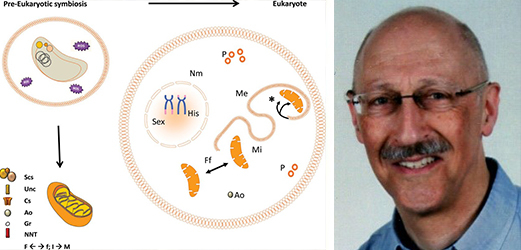Genuine amitochondriate eukaryotes have never been found and rapid, explosive, adaptive periods characteristic of symbiogenetic models explain this. Many of the new, almost universally conserved, eukaryotic features can be understood in light of rapid reciprocal adjustments to new evolutionary pressures during the merging process (e.g. mitochondrial genome reduction, peroxisomes, the nucleus, and meiotic sex).
Symbiogenesis allows these "expensive" eukaryotic inventions (thanks to efficient ATP generation by nascent mitochondria) to evolve "in reaction to" enhanced internal ROS formation. The synergistic combination of these two driving forces (ATP and ROS) helps explain the rapid evolution of eukaryotes.
Dr. Dave Speijer works at the Amsterdam Academic Medical Centre and University of Amsterdam.
